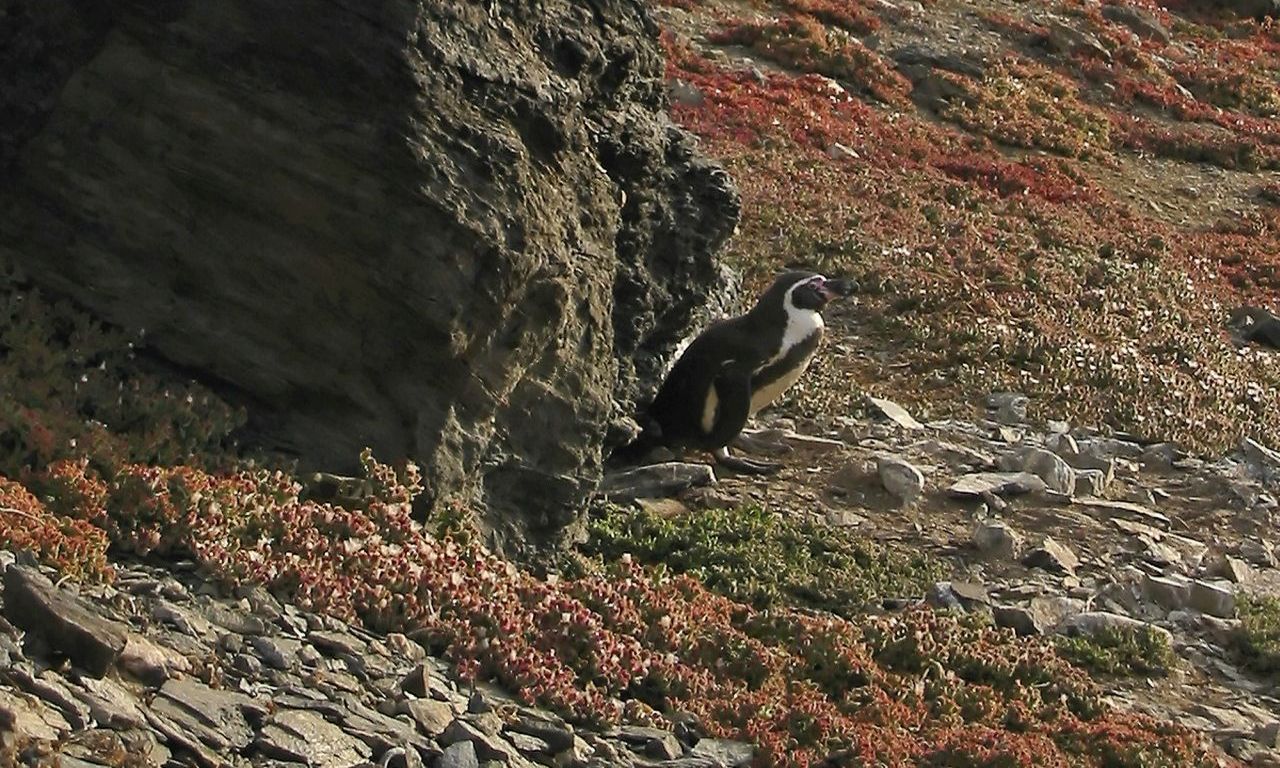Humboldt Penguin - Spheniscus humboldti
- DESCRIPTION
- Medium size penguin (67 -72 cm length; 4,2 – 5,0 Kg), similar to the other members of the genus Spheniscus, but can be differentiated as they are the only members of the genus that posses large fleshy margins at the base of the bill. Head mostly blackish-grey, having white chins and a narrow white supercilium stripe extending from the bill, broadening at the junction with their white breast. Dorsal parts of the body, flippers, legs, the feet and tail tend to be blackish-grey, most of the under-parts white.
- DISTRIBUTION
-
Coasts of Chile and Peru, in the region of Humboldt Current.

- HABITAT
- Marine, nests in islands or in rocky mainland coasts. Normally, small colonies on beaches, cliff tops or dirt planes, under guano, or under vegetation. Nests are usually in holes or caves
- BREEDING BIOLOGY
- All year round, where resources are available and abundant. In Punta San Juan reproduction occurs from March to December with two prominent reproductive peaks in April/May and August/September. In Chile there are also 2 reproductive peaks, but offset by a month (May, October). Females lay two eggs, of similar sizes and four days apart. Incubation for 40-42 days, hatching asynchronycal. First reproduction at 3-4 years old.
- FEEDING
- Pelagic predator. Main prey species are pelagic school fishes and squids, including anchovies (Engraulis ringens), silversides (Odontesthes regia), cephalopods and crustaceans.
- REPRODUCTIVE POPULATION
- 15,000/20,000 pairs.
- Conservation status (IUCN) and threats
- “Vulnerable” (IUCN Red List 2018), on the basis of extreme population size fluctuations, and decreasing population trend, and its populations undergone extreme fluctuations in numbers. Main threats are overfishing, and incidental mortality in fishing nets.
- SOURCE
- De la Puente, S., Bussalleu, A., Cardeña, M., Valdés-Velásquez, A., Majluf, P and Simeone, A. 2013. Humboldt penguins (Spheniscus humboldti). In PENGUINS: NATURAL HISTORY AND CONSERVATION (García Borboroglu, P.G. and Boersma P.D. eds.) UW Press, Seattle U.S.A. eds.) University of Washington Press, Seattle U.S.A. 328 pp.


